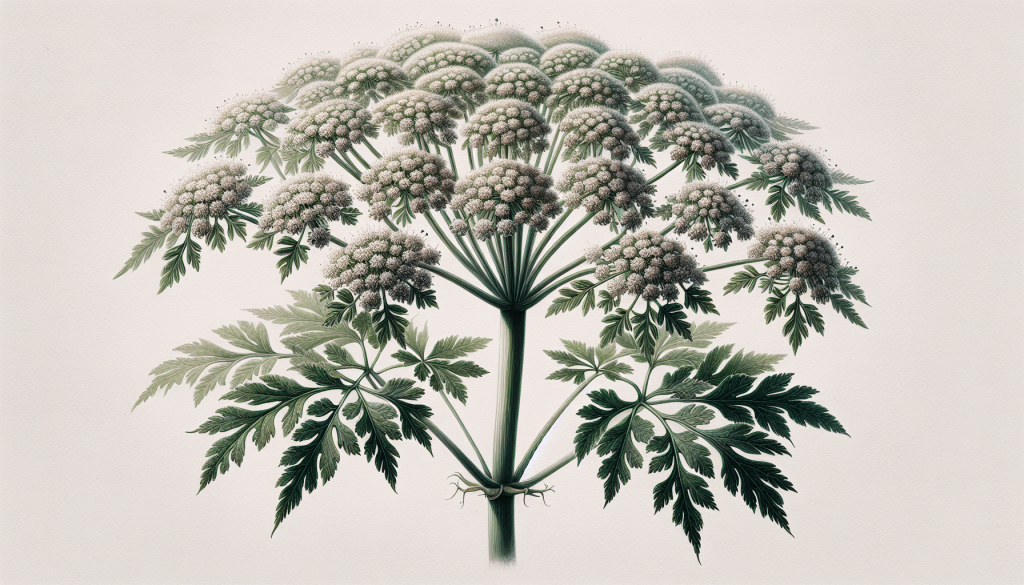This post may contain affiliate links. As an Amazon Associate, we may earn commissions from qualifying purchases.
The United Kingdom is home to a rich tapestry of flora, but among its picturesque landscapes lurk some dangerous plants, including the notorious Hemlock (Conium maculatum). As you navigate through the verdant countryside, it’s crucial to be able to identify this highly toxic plant, which, while contributing to the ecological balance, poses significant health risks to both humans and animals. Hemlock can be recognized by its tall, hollow stems streaked with distinctive purple spots and its umbrella-like clusters of small white flowers. Understanding its characteristics and typical habitats is essential for your safety and the well-being of those around you. Have you ever wondered about the plants you pass by during a nature walk, particularly if they might pose any danger to you or your loved ones? In the United Kingdom, with its temperate climate and diverse landscapes, it’s easy to come across a variety of flora, but some of these plants can be surprisingly hazardous. One such plant is Hemlock (Conium maculatum), a member of the carrot family and a notorious toxic plant.
Let’s delve into how you can identify Hemlock in the wild and understand its risks, all while appreciating the beauty and complexity of the natural world.

What is Hemlock (Conium maculatum)?
Overview of Hemlock
Hemlock, scientifically known as Conium maculatum, is a flowering plant in the Apiaceae family, which also includes carrots, parsley, and dill. Despite its family ties to these commonly used and benign plants, Hemlock is highly toxic. It is native to Europe and North Africa but has spread to other regions, including the UK and North America.
Historical Context
The name “Hemlock” might ring a bell for history enthusiasts. It’s famous for its role in ancient Greek history where it was used to execute prisoners, including the philosopher Socrates. The poison derived from Hemlock is powerful enough to cause respiratory failure and death, which is why it has been a plant of both fear and fascination throughout history.
Habitat and Distribution
Hemlock thrives in a variety of environments, making it a resilient and widespread plant. You’ll often find it in moist areas such as riverbanks, ditches, and marshes, but it can also grow in less wet areas like roadsides, fields, and waste grounds.
Here’s a quick look at where you might encounter Hemlock:
| Habitat | Description |
|---|---|
| Riverbanks | Moist and rich soil, ideal for Hemlock growth |
| Roadsides | Disturbed areas that can provide suitable conditions for Hemlock |
| Fields | Open spaces, particularly neglected fields where other plants aren’t dominating |
| Waste Grounds | Abandoned or uncultivated lands where Hemlock can thrive without much competition from other plants |
How to Identify Hemlock
Recognizing Hemlock is crucial for avoiding its dangers. Fortunately, the plant has distinctive features that you can learn to spot.
Physical Characteristics
Size and Shape
Hemlock can grow up to 2-3 meters tall, making it significantly taller than many other plants around it. It has a branching, hollow stem that’s typically covered with purple or reddish spots or streaks.
Leaves
The leaves of Hemlock are finely divided and feathery, resembling those of parsley or carrot tops. They are bright green and can grow up to 40 cm long.
Flowers
In the flowering season, which runs from June to August, Hemlock produces small, white flowers that are arranged in umbrella-like clusters called umbels. Each umbel can be up to 10 cm across.
Differentiating from Non-Toxic Plants
It’s easy to confuse Hemlock with non-toxic look-alikes like Cow Parsley and Queen Anne’s Lace. Here are some distinguishing features to help you out:
| Feature | Hemlock | Cow Parsley/Queen Anne’s Lace |
|---|---|---|
| Stem | Hollow, with purple spots | Solid or slightly hollow, no spots |
| Leaves | Finely divided, fern-like | Similar but usually less divided |
| Height | Up to 2-3 meters | Generally not exceeding 1.5 meters |
| Flower Clusters | Umbels up to 10 cm across | Smaller umbels, often more compact |
| Scent | Unpleasant, mousy odor | Mild or pleasant scent |
The Dangers of Hemlock
Understanding the risks associated with Hemlock is just as important as being able to identify it.
Toxicity Levels
Hemlock contains toxic compounds known as alkaloids, primarily coniine and gamma-coniceine. These substances can affect the nervous system, leading to symptoms ranging from mild discomfort to severe poisoning or death.
Symptoms of Hemlock Poisoning
Initial Symptoms
If someone ingests or comes into contact with Hemlock, the symptoms generally begin to show within 30 minutes to a few hours. Early signs of Hemlock poisoning can include:
- Nausea and vomiting: The body’s initial reaction to the toxins.
- Salivation: Increased saliva production as the toxins affect the nervous system.
- Dilated pupils: A reaction to the neurotoxic effects.
- Muscle twitching and tremors: A sign the nervous system is being compromised.
Advanced Symptoms
As the poisoning progresses, more severe symptoms can develop:
- Paralysis: Starting with the extremities and moving inward towards the core muscles.
- CNS depression: Leading to dizziness, confusion, and eventual loss of consciousness.
- Respiratory failure: Hemlock’s most dangerous effect, as it can lead to death due to the paralysis of respiratory muscles.
Treatment and First Aid
Immediate medical attention is crucial if poisoning is suspected. Here’s what you should do:
- Call emergency services immediately.
- Do not induce vomiting, as it can cause additional harm.
- Identify the plant involved if possible, and inform medical professionals.
Treatments may involve:
- Activated charcoal to absorb the poison.
- Supportive care for breathing and circulation.
- Medications to control symptoms (e.g., anti-seizure drugs).
Precautions and Safety Measures
Taking steps to avoid Hemlock exposure is essential, especially if you enjoy spending time outdoors or have pets and children.
Proper Identification
Familiarize yourself with Hemlock’s characteristics and teach others, especially children, to recognize and avoid the plant.
Area Management
If you have identified Hemlock on your property or frequent areas:
- Regular Monitoring: Keep an eye on your surroundings to catch Hemlock early.
- Proper Disposal: Wear gloves when handling Hemlock and carefully dispose of the plant to avoid spreading seeds.
Educating Others
Spread awareness among your community, particularly those involved in agriculture, gardening, and outdoor activities. Knowledge can significantly reduce the risk of accidental poisoning.

Conclusion
Hemlock (Conium maculatum) is a plant with a notorious history and significant dangers. Being able to recognize its unique characteristics and understanding the symptoms of its poisoning are critical skills for anyone who spends time outdoors, particularly in the United Kingdom where Hemlock is common. Knowledge and awareness are key to enjoying the natural beauty around us safely, ensuring that our appreciation for nature does not come with unwanted risks.
Remember, if you’re ever in doubt about a plant’s identity, it’s better to err on the side of caution. Stay safe and informed, and enjoy the splendor of the UK’s diverse plant life responsibly.








